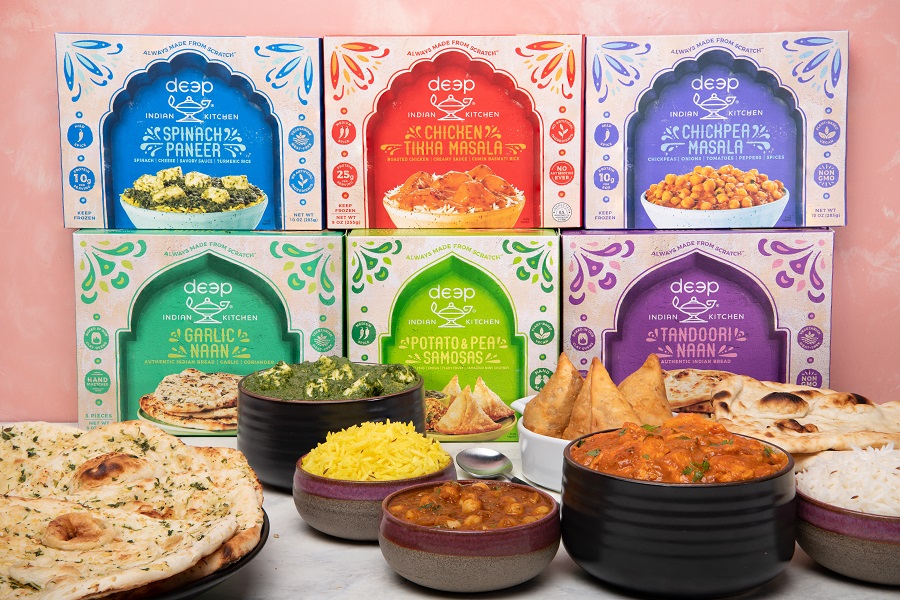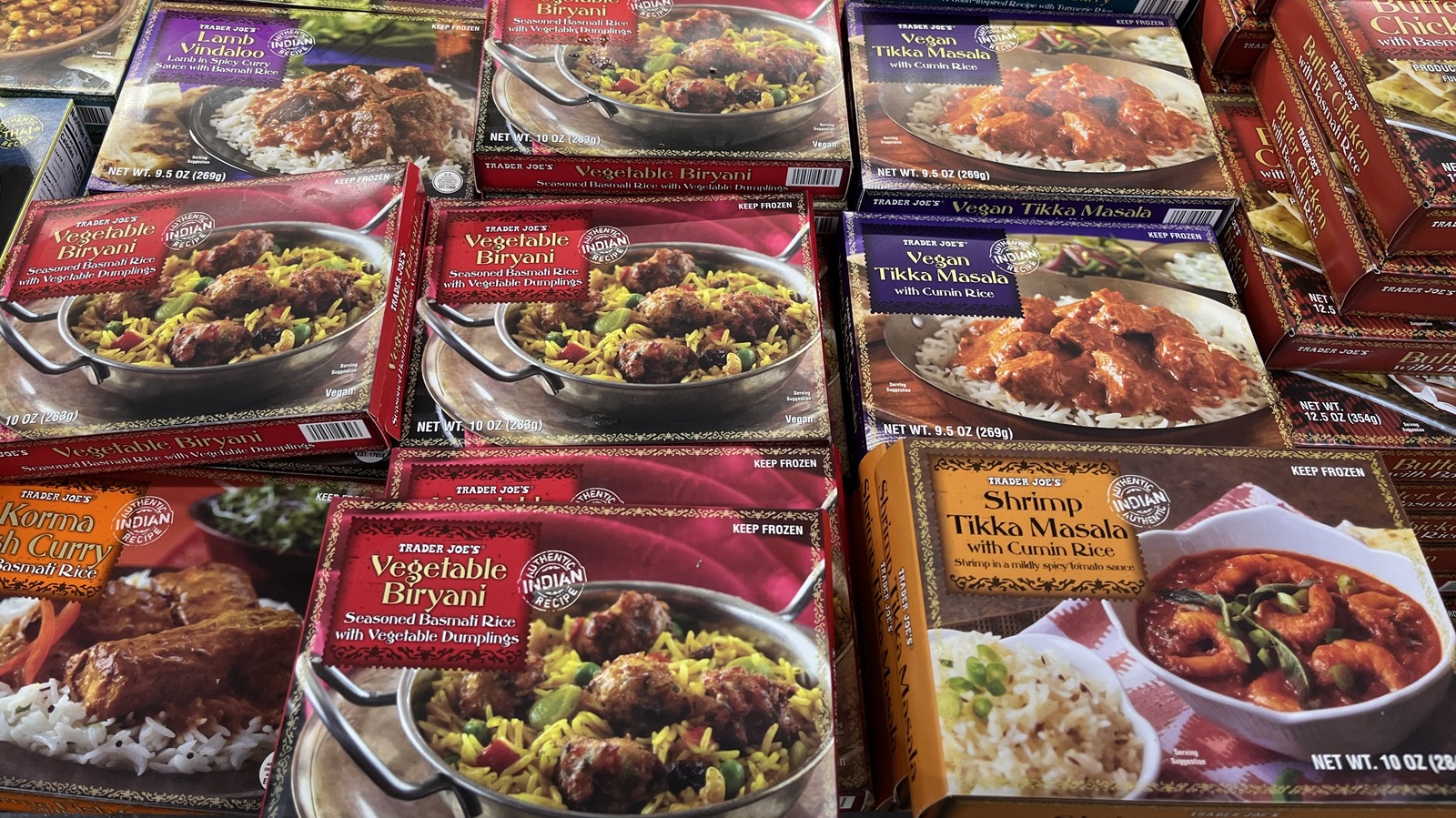As frozen Indian meals takes heart stage, this opening passage beckons readers right into a world crafted with good data, guaranteeing a studying expertise that’s each absorbing and distinctly unique. From market insights to client habits, this complete exploration delves into the intricacies of this dynamic business.
The frozen Indian meals market is a vibrant tapestry of flavors, comfort, and innovation. With its tantalizing aromas and ease of preparation, it has captured the hearts of shoppers worldwide. This introduction units the stage for an in-depth evaluation of the market panorama, product choices, and client preferences that form this culinary realm.
Market Overview

The worldwide frozen Indian meals market is experiencing substantial progress, pushed by growing demand for handy and genuine ethnic delicacies. In 2023, the market dimension was valued at roughly USD 5 billion, and it’s projected to succeed in USD 10 billion by 2030, exhibiting a CAGR of over 10% in the course of the forecast interval.
Key market tendencies embody the rising reputation of Indian delicacies globally, the rising variety of working professionals and time-constrained shoppers, and the growing availability of frozen Indian meals merchandise in supermarkets and on-line retailers.
Shopper Preferences
Shoppers are more and more looking for frozen Indian meals merchandise that supply:
- Genuine flavors and conventional recipes
- Comfort and ease of preparation
- Wholesome and nutritious choices
- Affordability and worth for cash
Main Market Gamers
Main gamers within the frozen Indian meals market embody:
- ITC Meals
- Godrej Tyson Meals
- Nestlé India
- Dabur India
- Haldiram’s
These corporations are competing on the premise of product innovation, distribution networks, and advertising methods to achieve market share.
Product Evaluation

Frozen Indian meals merchandise supply comfort and a style of genuine Indian delicacies. These merchandise are available a wide range of kinds, catering to various dietary preferences and culinary wants.
Categorization of Frozen Indian Meals Merchandise
- Entrees:Prepared-to-eat meals that includes conventional Indian dishes equivalent to curries, biryanis, and pulaos.
- Appetizers:Small bites and snacks, together with samosas, pakoras, and spring rolls.
- Sides:Accompaniments to primary dishes, equivalent to raita, chutneys, and pickles.
- Breads:Frozen parathas, rotis, and naans.
- Desserts:Candy treats like gulab jamun, kheer, and kulfi.
Dietary Worth and Components
Frozen Indian meals merchandise fluctuate in dietary worth relying on the elements used. Many entrees comprise a stability of carbohydrates, protein, and wholesome fat. They’re sometimes wealthy in spices and herbs, offering antioxidants and anti inflammatory advantages.
Nonetheless, it is necessary to notice that some frozen Indian meals objects could comprise excessive ranges of sodium and saturated fats. Checking the vitamin label earlier than consumption is really useful.
Packaging and Labeling Methods
Frozen Indian meals merchandise are packaged in numerous codecs, together with single-serving containers, multi-serving trays, and resealable luggage. The packaging usually options vibrant colours and imagery to draw shoppers.
Labeling sometimes consists of detailed ingredient lists, dietary data, cooking directions, and storage tips. Some manufacturers may embody further data equivalent to allergens, certifications, and sustainability practices.
Shopper Habits

The target market for frozen Indian meals is various, together with people looking for comfort, selection, and genuine flavors. These shoppers are sometimes time-constrained, worth comfort, and recognize the power to get pleasure from restaurant-quality Indian delicacies at residence.
Motivations and Boundaries
Motivations for buying frozen Indian meals embody:
- Comfort: Frozen Indian meals presents a fast and straightforward technique to put together meals with out intensive preparation or cooking time.
- Selection: Frozen Indian meals gives a variety of choices, permitting shoppers to discover completely different regional cuisines and flavors.
- Authenticity: Frozen Indian meals can supply genuine flavors and spices, offering shoppers with a style of conventional Indian delicacies.
Boundaries to buying frozen Indian meals could embody:
- High quality issues: Some shoppers could understand frozen Indian meals as inferior to freshly ready meals.
- Availability: Frozen Indian meals is probably not available in all retail areas.
- Value: Frozen Indian meals could be dearer than home-cooked meals or takeout choices.
Components Influencing Shopper Alternative
Components influencing client selection of frozen Indian meals embody:
- Comfort: Shoppers worth comfort, looking for merchandise which can be simple to organize and retailer.
- Style: Shoppers prioritize style, in search of frozen Indian meals that delivers genuine flavors and spices.
- Value: Shoppers take into account value when making buying choices, balancing affordability with high quality.
- Model fame: Shoppers belief respected manufacturers that persistently ship high-quality merchandise.
- Packaging: Packaging performs a job in client notion, with enticing and informative packaging growing enchantment.
Advertising and Distribution: Frozen Indian Meals
The frozen Indian meals market employs a spread of promoting methods to draw shoppers. These methods embody conventional promoting, digital advertising, and in-store promotions.
Conventional promoting consists of tv commercials, print ads, and billboards. These adverts usually function mouthwatering visuals of Indian dishes and emphasize the comfort and authenticity of frozen choices. Digital advertising entails focused on-line campaigns on social media, serps, and meals supply platforms.
Entrepreneurs use social media to have interaction with potential clients, showcase recipes, and run contests or giveaways.
Distribution Channels
Frozen Indian meals is distributed by means of numerous channels to succeed in shoppers. These channels embody supermarkets, hypermarkets, comfort shops, and on-line grocery retailers.
Supermarkets and hypermarkets are main distribution channels, providing a wide array of frozen Indian meals manufacturers and merchandise. Comfort shops present handy entry to a restricted number of frozen Indian meals objects. On-line grocery retailers supply a complete choice and the comfort of residence supply.
Affect of On-line Grocery Buying, Frozen indian meals
The rise of on-line grocery buying has considerably impacted the frozen Indian meals market. Shoppers more and more desire the comfort of ordering groceries on-line, together with frozen Indian meals objects.
On-line grocery retailers supply a wider number of frozen Indian meals merchandise in comparison with conventional brick-and-mortar shops. Additionally they present residence supply companies, eliminating the necessity for purchasers to bodily go to shops and carry heavy grocery luggage.
Innovation and Future Developments
The frozen Indian meals business is continually evolving, with new tendencies rising on a regular basis. These tendencies are being pushed by quite a lot of elements, together with altering client preferences, advances in meals expertise, and the growing reputation of on-line grocery buying.
One of the vital important tendencies within the frozen Indian meals business is the rising demand for more healthy choices. Shoppers are more and more in search of frozen meals which can be low in fats, sodium, and energy. In response to this demand, many producers are actually providing more healthy variations of their conventional merchandise.
One other pattern within the frozen Indian meals business is the rising reputation of plant-based choices. Increasingly more shoppers are selecting to eat much less meat, and that is driving demand for plant-based frozen meals. Many producers are actually providing a wide range of plant-based frozen Indian dishes, together with entrees, sides, and snacks.
Modern Product Developments
Along with the rising demand for more healthy and plant-based choices, there are a variety of different progressive product developments happening within the frozen Indian meals business. These embody:
- The event of latest packaging options that stretch the shelf lifetime of frozen meals.
- The usage of new cooking applied sciences that enhance the style and texture of frozen meals.
- The event of latest product codecs, equivalent to single-serve meals and snacks.
Future Development Areas and Alternatives
The frozen Indian meals business is predicted to proceed to develop within the coming years. This progress can be pushed by quite a lot of elements, together with the growing reputation of on-line grocery buying, the rising demand for more healthy and plant-based choices, and the event of latest product improvements.
There are a selection of alternatives for progress within the frozen Indian meals business. These alternatives embody:
- The event of latest merchandise that meet the wants of particular client teams, equivalent to single-serve meals and snacks.
- The enlargement of distribution channels, equivalent to on-line grocery buying and comfort shops.
- The event of latest advertising methods that attain shoppers who usually are not presently buying frozen Indian meals.
Frequent Queries
What are the important thing elements driving the expansion of the frozen Indian meals market?
The expansion of the frozen Indian meals market is primarily pushed by elements equivalent to rising disposable incomes, altering existence, growing urbanization, and the rising reputation of comfort meals.
What are the various kinds of frozen Indian meals merchandise out there?
Frozen Indian meals merchandise embody a variety of choices, together with entrees, appetizers, snacks, and desserts. These merchandise are available numerous codecs, equivalent to ready-to-heat meals, particular person parts, and bulk packs.
How do shoppers understand the dietary worth of frozen Indian meals?
Shoppers are more and more health-conscious and search frozen Indian meals choices that supply dietary advantages. Many manufacturers are responding to this demand through the use of more healthy elements, lowering sodium and fats content material, and offering clear dietary labeling.




